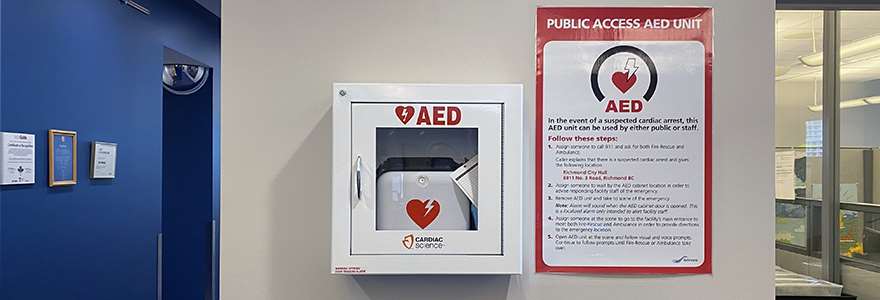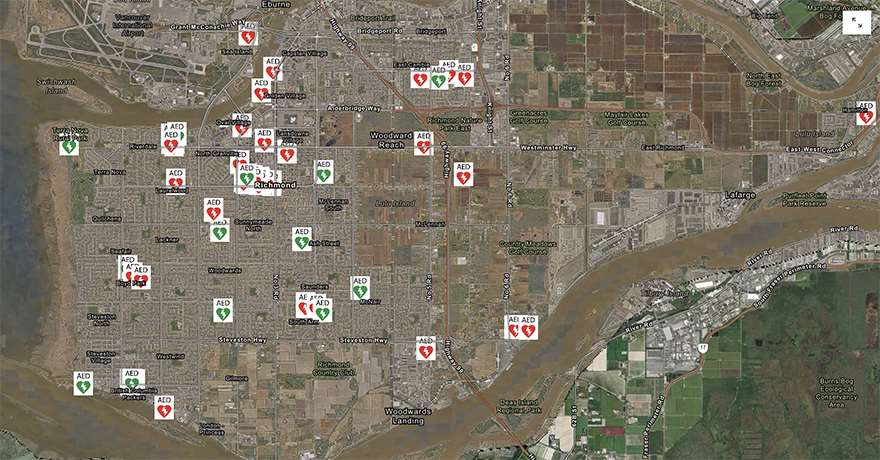Automatic External Defibrillators (AEDs)

Publicly Accessible AEDs in Richmond
As part of the City of Richmond's commitment to health and safety for residents and visitors, there are 72 AEDs located in municipal parks, community centers, works yards, libraries and office buildings throughout Richmond.
- 12 AEDs are available in public spaces and are accessible 24 hours per day, 7 days per week.
- 60 AEDs are available inside of buildings and are accessible during regular hours of operation.
To view a complete map of AED locations in Richmond, download the printable map or click the dynamic map button below and familiarize yourself with their locations and hours of operation.
AED Printable Map - Locations in Richmond
AED Dynamic Map - Locations in Richmond
What is an AED?
An AED is a portable life-saving device that analyzes a person's heart rhythm during a sudden cardiac arrest. If necessary, it can deliver a shock to help restore a normal heartbeat. The device is safe to use and delivers an electric shock through two self-adhesive electrodes placed on the patient’s chest, ensuring the safety of those administering the shock. It is nearly impossible to make a medical situation worse by using an AED.
When to Use an AED?
Use an AED when someone is unresponsive, not breathing and has no detectable pulse. Time is critical as the chance of survival from a cardiac arrest decreases by 10% for each minute that passes without treatment. Quick access to an AED can save crucial minutes and significantly improve the chances of survival.
AED Safety
AEDs are safe and effective devices that can be used by anyone, regardless of their training level. AEDs provide clear, step-by-step instructions and diagrams to guide users through the process.
Steps to using an AED
If you see someone in cardiac arrest (or even think they are in cardiac arrest), take these simple steps:
- Check to see if the person is breathing or has a pulse.
- If you cannot feel a pulse and the person is not breathing, phone 9-1-1. If you are alone, call 9-1-1 first, then check on the person. Stay on the line, answer the 9-1-1 operator's questions, and follow their directions.
- Get the AED. If you are alone and the AED is nearby, get it first, then check on the person.
- Turn on the AED and follow the instructions. The AED features step-by-step audio instructions that guide you through the entire process. Remember, you do not need any first-aid training to operate the AED; it will only administer a shock if necessary.


